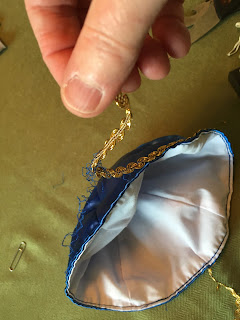Part of an occasional series on "statistics." A good statistician will tell you that those two words – anecdotal and evidence – never belong next to each other. But I am only a mediocre statistician so I proceed without fear to present some anecdotal evidence on random topics.
* * * * * * * *
If I put my secret sauce on food they hate, the family will eat it, and like it.
Evidence, with n=2 foods hated and n=2 food haters.
Evidence for n = tofu
For a long time, I have been trying to cook tofu that is palatable to the rest of the family, with the goal of eating less meat-based protein. I like tofu, simply pan-fried, but the other two don’t.
I asked a pastor friend of mine the best way to cook tofu, and he said, “You have to season the hell out of it.” Which seems like reasonable advice from a pastor. I’ve tried a number of different recipes over the past few years, but nothing appealed to my clientele.
Saturday April 18, 2020, Day 34 of stay-at-home.
I decided that dinner would be tofu in honey-garlic sauce, the family’s dislike of tofu be damned (I feel my pastor friend would agree with that sentiment).
A miracle! All members of the Common Household liked the tofu! The key was not the honey-garlic sauce, but my secret sauce. Here’s how I made it:
I cut the tofu in pieces about ½ inch thick, and marinated it in a mixture of honey, soy sauce, and minced garlic. Dipped it in flour, and then fried it (almost burned it, but not quite).
I transferred the tofu to a serving bowl. I put about ¼ cup of plum sauce (from a jar) in the hot pan, plus a dollop of ginger paste (from the tube) and also added the remainder of the honey-garlic sauce from the marinating step. I heated it briefly, and then poured it over the tofu. Then, like Mikey in the Life Cereal® commercials of my childhood, the tofu-haters ate it, and declared that it was actually tasty. Success!
Evidence for n = broccoli
Saturday April 25, 2020, Day 41 of stay-at-home
At 6 PM it became clear to me that no one else was going to make dinner. I yanked some tilapia out of the freezer. I also realized we had fresh broccoli, bought on Monday, that needed to be cooked immediately. As I hauled the broccoli out of the fridge, the other Common Household residents made faces and declared they would not eat it.
We'll see about that, I thought. I sliced some onions and then threw the fresh broccoli in the frying pan. After the broccoli was cooked I took it out of the frying pan, and I made my secret sauce: some minced garlic in the pan, fry for 1 minute. Then add 1/4 cup of plum sauce and a dollop (about a tsp) of ginger paste. Stir for another minute to heat, then pour over the broccoli w/onions. Everyone ate the broccoli, despite their declared hatred for it. Secret sauce for the win!
God help me if the family decides that I must eat mayonnaise during stay-at-home. I will refuse, because mayonnaise is a sauce from hell.
More anecdotal evidence:
California
Furniture
More anecdotal evidence:
California
Furniture
* * * * * * * *
Here is the original recipe for Honey-Garlic sauce, which is more involved than what I did for the tofu.
Honey-Garlic Sauce
Ingredients
1/3 c. honey
1/3 c. soy sauce
2 garlic cloves, minced
Juice of 1 lime
1 tbsp. sriracha
1/4 c. water
2 tsp. corn starch
1/4 c. sliced scallions (optional)
DIRECTIONS
In a small bowl, whisk together cornstarch and water, until the cornstarch dissolves completely. Set aside.
Combine soy sauce, honey, garlic, lime juice and Sriracha in a small saucepan over medium heat.
When the mixture reaches a boil, reduce heat and add the cornstarch mixture. Bring to simmer again and cook until sauce thickens, about 2 minutes.
How to use:
Use on broiled fish (apply in the last few minutes of cooking). Or on baked or stir-fried vegetables. Or on tofu.



























